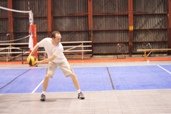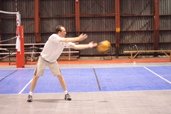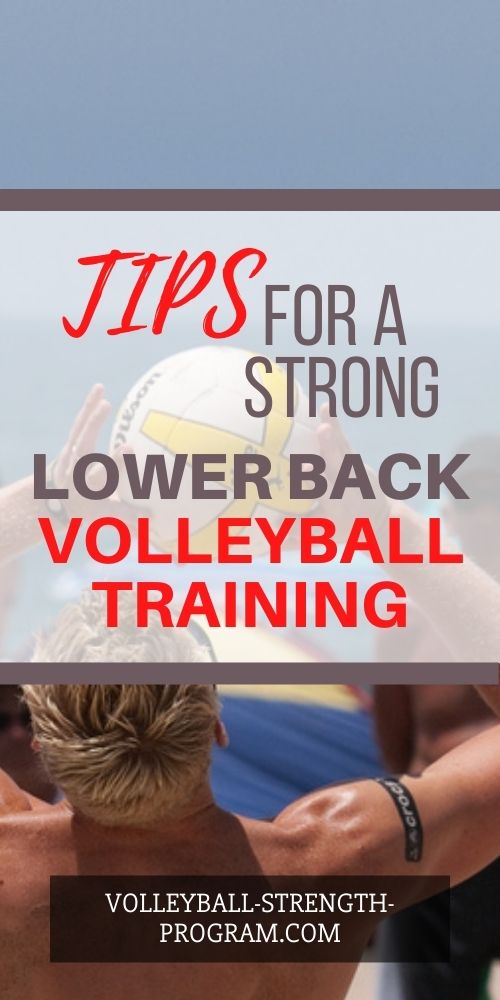LESSON 9:
4 Steps to a
Better Low Back
Here are 4 steps that will improve your volleyball back strength by developing core stability and hip mobility.
Step 1: Core Stability
Step 1 focuses on improving core endurance.
You must use perfect technique (neutral spine, hips extended).
You must pass these basic tests
- 90 second side plank
- 2 minute front plank
- 2 minute back reverse plank
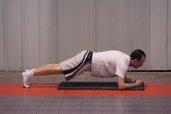
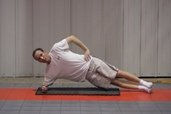
Once you are able to perform these exercises with perfect form
in the required time, you can move on
to Step 2.
Hip Mobility
Do isolated work where theres no stability demands.
Everything is "ground based".
Example,
Supine Straight Leg Raise Exercise Lie on your back and raise one leg straight up.
You can place a folded towel under your lower back to help round. This gets the
focus on using the hips. Repeat with opposite leg.
Step 2: Pelvic Alignment
1. Improve Pelvic Alignment
Use the force coupling concept. Get muscles on the front side of
your hips to work well together to promote motion with the muscles on
the back side of the hips. Hip flexors in the front pull down, while the
spinal erectors in the back pull up.
2. Isolated Core Work
Example, Ab Wheel Exercise.
This is more than just core training!
This works your anterior core, glutes, and hamstrings. All these
muscles improve your alignment bringing you back closer to neutral
spine.
Hip Mobility
Do basic mobility work. Focus on one joint (at the hip).
Example, Knee Up Walk Exercise. You're not flexing the spine in this
movement... it's all about the hips! Extended upper back, neutral spine,
and movement through
the hips.
Step 3: Force Reduction/neutralization
Core Stability
At this phase, focus on force reduction/neutralization. You want to be training
usable strength.
Perform exercises that prevent rotation. An example
would be alternating dumbbell rows. Also, single arm military presses is another
example. These types of exercises enforce spine stabilization.
Hip Mobility
Advanced mobility training
begins at this phase.
Begin to work in conjunction with activation. Work with maximal stability demands. Work multiple joints/planes of movement.
Step 4: Force Transmission
This is the beginning of training "force transmission".
Think about a good volleyball spike. When a volleyball player takes
steps during the approach, force is sent into the ground.
Power is transmitted
from the ground up through the core and finishes in the extremities.
This is how the body is suppose to work. If youre loose in the lumbar
spine, there will be an energy leak and youre losing power and risking
injury.
Spiking a Volleyball
To spike effectively, you need to be good at transmitting power.
Power = Speed + Strength
Example, Medicine Ball Rotational Throw Exercise.
Medicine Ball Throw for Volleyball
Medicine Ball Throw for Volleyball
Example below, Medicine Ball Overhead Slam Exercise. Keep your stomach drawn in and braced during the movement.
You'll benefit greatly from these medicine ball exercises if you do them correctly.
If you enjoyed these tips and would like to keep it close to you at any time, just save this pin to your Pinterest Volleyball Training Board
Volleyball › Coaching Lessons › Volleyball Back Training
ACCESS MY STRENGTH SECRETS
